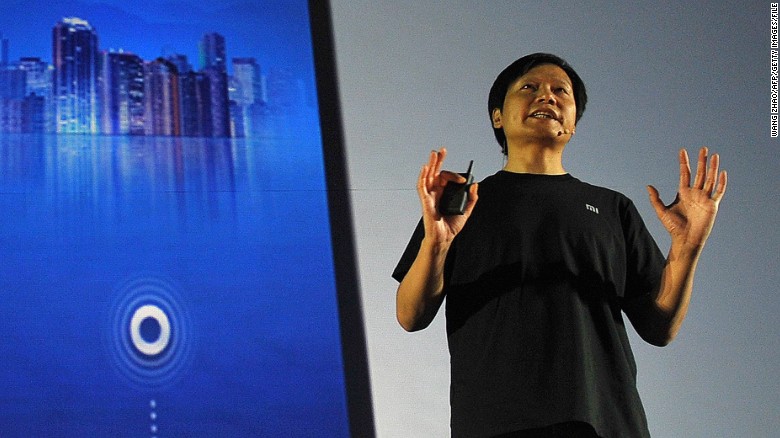
Xiaomi is the most important phone manufacturer you’ve never heard of.

In the rich world, dominated by Apple and Samsung and where even fading brands such as Nokia and Blackberry remain familiar, Xiaomi (pronounced like the “show-” in shower, plus “me”) is still largely unknown.
Yet this firm, only 5 years old, has already become a formidable supplier of smartphones in its home market of China (the world’s largest), and has begun a remarkably successful campaign of international expansion.
As the firm gets ready to announce its newest model, the Mi5, next week, it is worth tuning in, because more than any company other than Apple, Xiaomi will show us where smartphones — which is to say the mobile, networked computers we all have in our pockets — are going worldwide.
China and the United States are the two most important economic powers in the world, and that goes double for technology.
For three decades, that relationship could be summed up as “invented here, produced there.” (The iPhone box may say “Designed in California,” but it is made in Shenzhen, China.) Xiaomi is one indicator among many that that relationship is over. Its phones are well-designed and cheap, and, more importantly, the firm has been engineered to rely on the Internet, allowing it to build one of the leanest manufacturing and sales operations the world has ever seen.
In a half decade, Xiaomi has gone from a startup focused on making a new mobile phone interface to beating Samsung as the No. 1 phone vendor in the largest market in the world last year.
Xiaomi’s products are so popular in China that it has become the third largest ecommerce firm there, just selling its own products. As 2014 closed, the company was valued at $45 billion, an increase in value of something like 18,000% since its first round of fund-raising. It is, by several metrics, the most valuable startup ever.
Xiaomi is widely referred to as the “Chinese Apple,” a phrase that carries both a sense of awe at its design prowess and derision at its habits as a design copycat. Both reactions are warranted — some of their phones look like little else on the market (the Mi3), while others are almost-copies of iPhones (the Mi4).
The firm was founded in Beijing in 2010 by Lei Jun, a computer scientist and charismatic serial entrepreneur now in his mid-40s, who is predictably, often compared to Steve Jobs, both for his energy and brilliance, and for his Jobsian taste in clothes and product launches.
Xiaomi’s importance, though, is about more than just its growth. It’s about how it grew. The company was designed, from the beginning, to assume that both social media and ecommerce were normal. The rapid and enormous success came about largely because these tools allowed the firm to do everything backward.
For starters, the company recruited users before it had a product, and it shipped software before it started making phones. Xiaomi intended to offer an upgraded version of the Android operating system (owned by Google and used by every smartphone manufacturer except Apple), so its first order of business was to go on Chinese sites looking for passionate and knowledgeable Android users to test its products. Its first 100 users became a kind of external brain trust and auxiliary marketing arm, offering both detailed feedback and public praise for MIUI, the Mi User Interface, pronounced, quite by design, “Me You I.”
A hardware company started with software because Lei understood the paradox of computing, which is that the better the hardware is, the more difference the software makes. Xiaomi’s first products were dozens and dozens of iterations of MIUI. (It still ships an updated version of MIUI every week.)
This rapid cycle of iteration, launch and feedback got Xiaomi an eager early audience and a continually improved version of the operating system for the phone it would eventually ship.
After a year of that, Xiaomi shipped the Mi1 but only sold it online, often offering limited production runs in “flash sales” where the phones would sell out in a few hours (and, as they got popular, in a few minutes.) Every one of these decisions and countless others gave the company a slight edge over its competitors. Taken together, they have made the company globally important in a short time.
Xiaomi’s coming expansion will be its real legacy. Mobile phones are the most broadly desired category of complex goods in the world, beating out their only rivals — cars and televisions — by a mile. The mobile phone is also the near-universal source of connectivity for most of the world’s population, increasingly the gateway to every form of communications other than face to face, to every form of content other than karaoke, and to every form of commerce other than haggling.
Though Apple invented the iPhone, and Samsung spread smartphones, it’s Xiaomi that showed the world how to create a defensible market between luxurious and crappy, and to scale up to meet the rising demand of the rapidly expanding middle class in Nigeria, Indonesia, Brazil, Mexico, India, cumulatively the world’s biggest market by far.
There are opportunities for the United States here since good, cheap products benefit U.S. consumers, too. There is also competitive risk, as always. But the biggest threat Xiaomi poses is for companies that don’t take it seriously.
Xiaomi marks the end of China as a pure importer of products designed elsewhere. It was one of the first companies to adopt the new methods that are making China a center of innovation in design, electronic commerce and services. Xiaomi introduces a new risk in that relationship — not a risk that Chinese firms will copy too much from the United States, but that the American firms will copy too little from China.
As reported by CNN
